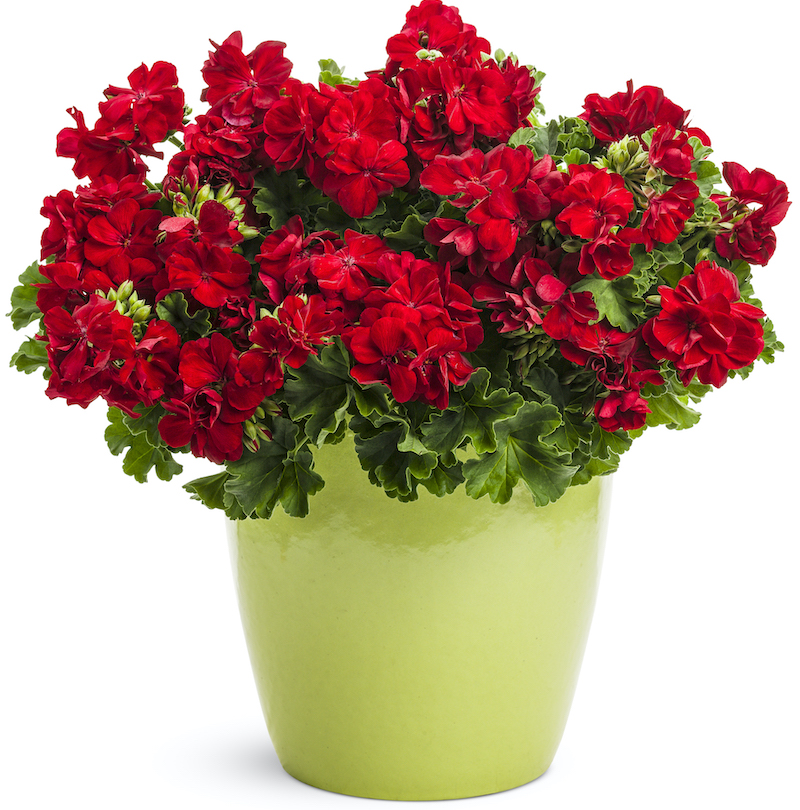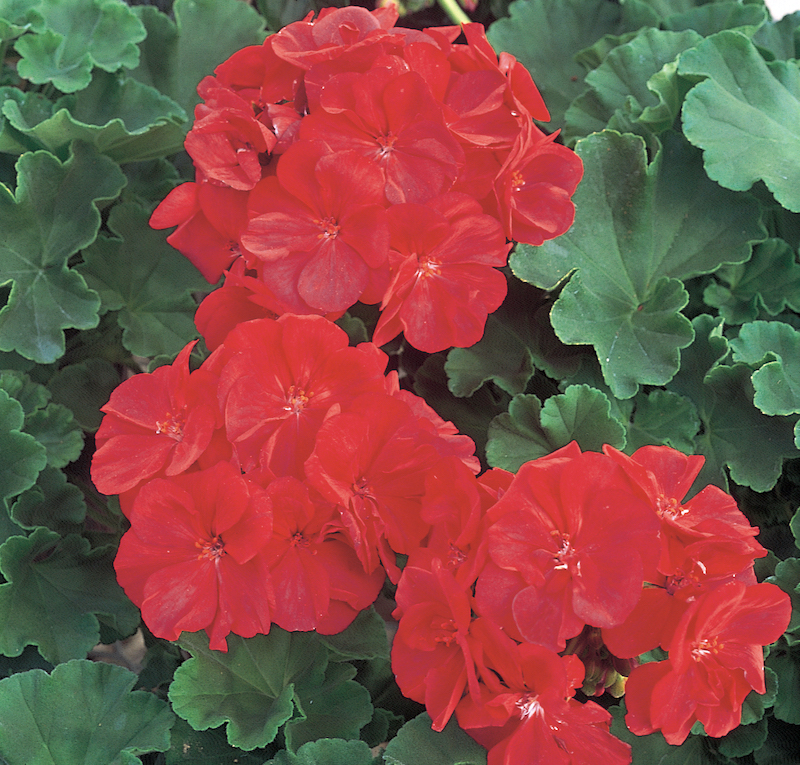Annual geraniums, called pelargoniums, are not heavy feeders but can benefit from regular fertilizing during the growing season. These are fast-growing annuals that will often bloom from May to October if given potassium-rich feed. Keep in mind the species form of pelargonium does not need to be fed as much as the showy hybrids.

Hardy geraniums usually do not require fertilizer. If the soil is poor, apply a balanced fertilizer to your garden or container or top-dress the root zone with organic compost. Plants in containers generally require more consistent feeding than those in the ground.

How to Fertilize Geraniums
Geraniums prefer to grow in soil with neutral to alkaline pH. We always advise testing your native soil for nutrients and pH level before choosing soil supplements. If your soil is on the acidic side, you can sweeten the soil with lime, crushed oyster shells, or wood ash.
To encourage growth and flowering, you can feed geraniums with a slow-release fertilizer or liquid potassium fertilizer. Annual geraniums can be fed regularly during the summer months; for perennial geraniums, one application in the spring is likely sufficient. If you are using liquid-soluble fertilizer, make sure you provide plenty of water to avoid buildup of fertilizer salts. Avoid fertilizers with high nitrogen, which will promote foliage growth and reduce flowering. Alternatively, you can topdress the root zone with a high quality compost, which will release nutrients slowly into the soil and help retain water.
Signs that your annual geranium is not getting enough nitrogen include slow growth and yellow leaves. Leaves that turn dark green or reddish to purple can indicate phosphorus deficiency. Your annual geranium may be deficient in potassium if the lower leaves die or stems become weak. Hardy geraniums rarely experience nutrient deficiency.

Best Time To Fertilize Geraniums
You should fertilize annual geraniums during the growing season, which is typically May through October. Start by applying a balanced liquid fertilizer every two weeks according to the product’s instructions. When the plant starts to bloom, switch to a fertilizer high in potassium such as a tomato feed to encourage a long blooming season.
Avoid feeding during the hottest parts of the day when the chance of fertilizer burn is higher. Reduce the frequency of feedings in the fall to once per month or less. You can overwinter annual geraniums by cutting them back, reducing watering, and storing them in a cool, sunny spot. During this time, no feeding is necessary. Let the plants rest until they start to show signs of new growth in the spring.
Hardy geraniums can be fertilized annually in the spring with a balanced fertilizer to encourage blooming. A yearly application of organic compost around the base of the plant is also advised.
Best Fertilizer For Geraniums
Slow-release fertilizers are a good choice for both annual and perennial geraniums. Two of our favorites include Osmocote Smart-Release Plant (9-6-12 NPK) fertilizer and Miracle-Gro Shake N Feed (10-18-9 NPK). During the summer months, you can also use a liquid fertilizer such as ALGOplus Geranium and Patio Plants Liquid Fertilizer 4-6-8 NPK, which is specially formulated for growing annual geraniums. Reviewers rave that this product boosts flower production. Other liquid fertilizers include Miracle-Gro® All Purpose Concentrated Liquid Plant Food Food (12-4-8 NPK) and Southern Ag PowerPak Water Soluble Fertilizer (20-20-20 NPK).
- Start feeding annual geraniums in the spring with a balanced fertilizer
- Switch to a high potash feed when buds appear on annual geraniums
- Do not fertilize annual geraniums that you are overwintering
- Hardy geraniums do not need to be fertilized in most cases
Warnings
-Always wear protective gloves and a face mask when handling chemical fertilizers.
-Closely follow all directions and storage guidelines that are on the fertilizer label.
 |
Author Jessica Mercer - Published 7-04-2022 |
